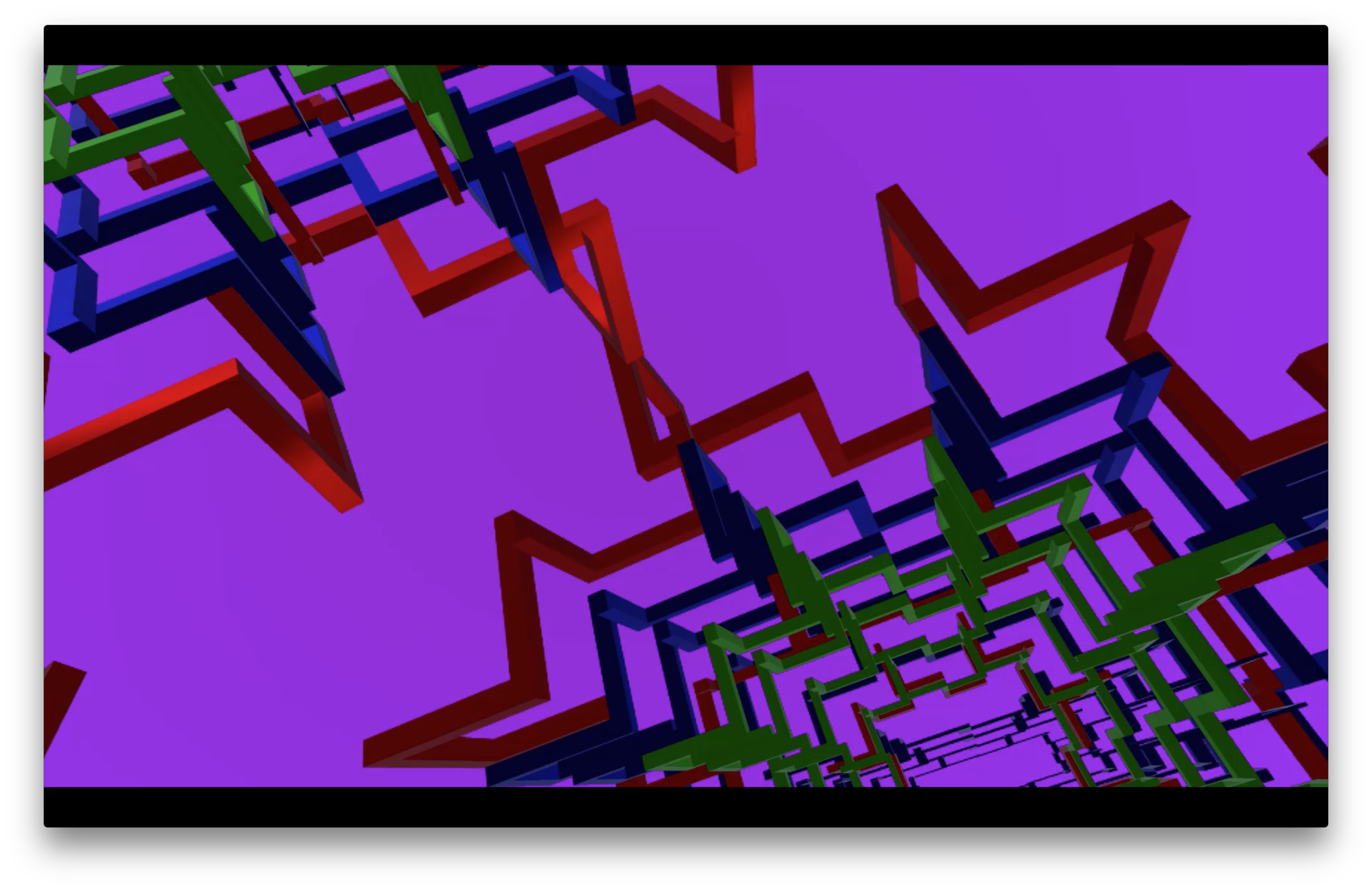
“We weren’t seeing a lot of the work we wanted to see in the world, so we decided to create a space exclusively for it,” says Alfredo Salazar-Caro of DiMoDA, the Digital Museum of Digital Art, which he co-founded with fellow artist William Robertson in 2015.
The duo were students together at the School of the Art Institute of Chicago. “We were both active in the New Media and Glitch scenes, of which Chicago happened to be a big hub,” Salazar-Caro says. The Glitch ethos is essentially about error: It rejects the hyper-clean aesthetic most commercial technology relies upon, and instead its artists manipulate data or devices to create dirty graphics, or push machines to the point of almost breaking—a Nietzschean twist on tech, positing renewal through destruction.
Around the time Robertson and Salazar-Caro were thinking of creating their own platform in 2013, VR technology suddenly became a lot more accessible to a broader public. “Until then, it had very much only been for developers, so we realized we needed to move into VR—it was a way to carve our own space independently,” Salazar-Caro says. Unlike physical or web space, VR real estate is still free. “It will become colonized—there’s a lot of talk about the meta-verse, which is the VR version of the Internet—and there’s already a crypto-currency directly related to virtual real estate,” Salazar-Caro says. “But that’s part of what we’re thinking about: how do we maintain this space and be able to criticize it?
DiMoDA’s founders are aware of the responsibilities of creating new worlds and are mindful of it in their selection of artists. “It’s really important at this early stage of adopting VR into society at large to be critical about it. We want to try to create experiences that are uplifting, and which expose people to new ideas and cultures—it’s our primary goal,” Salazar-Caro says.
“The vast majority of what Oculus is selling is violent video games,” he says. “I grew up playing those kinds of games, but it’s exponentially more dangerous with VR. You’re not just hitting a button to reload a gun—you’re actually grabbing a gun and reloading a cartridge and shooting a person. It takes it to a whole new level. There’s a reason the military is using VR for weapons training, because it’s faster and safer than using real guns. But weapons training should not be available for kids in VR, and right now, it is. That’s disturbing,” he says. “We need to be a counter-current to that.”
Salazar-Caro, who came to the U.S. as an immigrant from Mexico City, says he is “a really big advocate for diversity and, more than that, for integration. Diversity is a metric, whereas integration is actually joining forces and having a conversation.” Di Moda is focused on working with artists who might not otherwise have access to technology, which remains an area in which “minorities tend to be underrepresented. So, we reach out to super talented artists—including Rindon Johnson, Korakrit Arunanondchai, Claudia Hart and Jacolby Satterwhite—who aren’t necessarily technologically inclined. William and I will do a lot of the programming to create the work for them, but we teach them in the process and hopefully open them up to this world.”
Right now, the best way to access the museum is with a VR set—“you can see it online but it’s really more of a translation,” Salazar-Caro says—but he expects VR and augmented reality to become part of “our everyday lives within five years. It’s happening fast. The operating system on the new iPhone 8 is completely supportive of VR, for example.”
Salazar-Caro’s own work focuses a lot on portraiture. “Portraiture has always been a way of immortalizing a person’s image, and we can now take that a lot further,” he says. “I do 3D scans of people and then alter the scans to create portraits. It’s an extension of photography to an intense degree, in which I can see you from every angle and manipulate your body however I want.”
“The next step for portraiture is being able to simulate someone’s likeness by training a computer to learn how they behave over time, and then attaching that intelligence to the 3D simulation,” says Salazar-Caro, pointing out that we are already creating digital mausoleums to ourselves via Facebook and Instagram. “I will live as a computer simulation longer than my organic life,” he says. “I think it will be fairly common in the next 20 or so years.”




